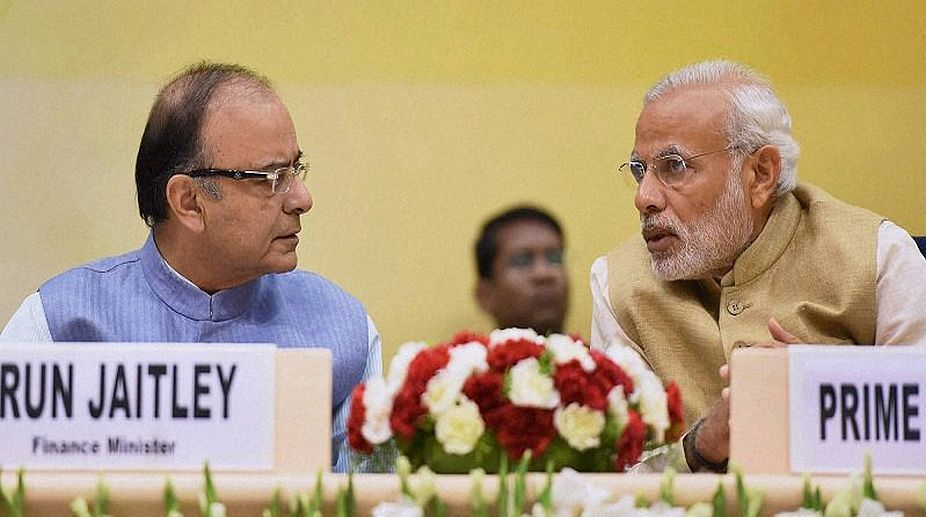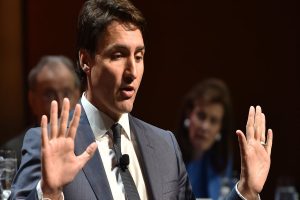Faced with a worrying decline in GDP growth, industrial production and jobs, Union Finance Minister Arun Jaitley chaired an inter-ministerial brain-storming session on 19 September, with a view to create measures that could be speedily implemented in order to stimulate India’s economy.
Rail and Coal Minister Piyush Goyal, Commerce Minister Suresh Prabhu, top bureaucrats from the Commerce and Finance ministries, Niti Aayog chief Rajiv Kumar, and officials from the Prime Minister’s Office attended the session.
Advertisement
The key message that emerged was that the Narendra Modi government won’t steer economic policies in a new direction, but generate fresh measures to galvanise the economy and implement financial plans rapidly.
“The group discussed areas which need greater thrust. Exports, industrial production, infrastructure and job generation were discussed as zones which need speedy stimulus,” said an official. The group agreed that the government would have to provide the fiscal stimulus that the country needs.
They have realised that the private sector ~ which has remained indifferent to the Centre’s attempts to get it to open its cheque books ~ won’t change overnight.
All participating ministries presented the measures they had planned, as well as ideas on how to increase the speed of execution. For instance, the Railway ministry has a raft of infrastructure plans that could involve the private sector and generate employment.
The Commerce ministry has been asked to create a blueprint for incentivising exports to boost production and create jobs. The cash crunch post demonetisation reduced demand, which in turn stymied industrial production. This caused GDP growth to fall from 7.1 per cent in last year’s first quarter to 6.1 per cent in the corresponding quarter this year. The figure for Q2 is even lower: 5.7 per cent.
Various estimates say the note ban, touted as a crusade against hoarders of undeclared income and financiers of terrorism, has wiped out around 1.5 million jobs. Inflation has risen by almost 1 per cent this month alone; it was at an all-time low last month.
As regards India Inc., it remains averse to expanding the job market in the near future, given the doubts about the manufacturing sector. A quarterly survey by the Federation of Indian Chambers of Commerce and Industry (FICCI) shows that as many as 73 per cent of manufacturers had no plans to hire new personnel between July and October.
The government hopes the effects of demonetisation will slowly wear off, and that demand and manufacturing will increase again. But 74 per cent of the entities in FICCI’s report had no plans to add capacity in the coming months. The organisation recorded responses from over 300 companies from a wide array of sectors, with a combined annual turnover of Rs 3.5 lakh crore. Since private investment in manufacturing is likely to remain low for a few more months, the Modi government has decided to speed up whatever the public sector can do.
It hopes that in doing so, it will create a trickle-down impact, encouraging the private sector at a time when macroeconomic indicators are positive. Global growth is showing signs of revival, government revenues are improving, foreign exchange reserves ($400 bn) and oil prices are at reasonable levels, the money flow is encouraging, and a satisfactory monsoon is keeping food prices in check. Despite such feel-good factors, the Indian economy is heading for a “major depression” and it can “crash” soon if efforts are not put to revive it, BJP leader Subramanian Swamy has said.
The Rajya Sabha MP claimed that a year and a half ago, he had written a 16-page letter to the Prime Minister warning him about the economy, which is in a “tailspin”. “We need to do a lot of good things to revive the economy.
Even a tailspin can be made to steady. If nothing is done, we are heading for a serious depression. Banks may collapse, factories might start closing,” he said. The Modi government needs to get its act together on the economy to prevent big slippages in growth as well as to keep inflationary risks well under control. Economic growth had eased to its slowest in 13 quarters in the April-June quarter of the current fiscal year and full year growth is expected to be around 7 per cent.
Much of the slowdown in the second half of the last fiscal year and the first quarter of the current fiscal is a result of the shock demonetisation that was announced on November 8 last year.
Growth in the current quarter and perhaps even in the next is expected to be impacted by the implementation of GST on July 1 this year. Both demonetisation and the GST implementation were disruptive moves, but the Government needs to be more proactive in relieving the pain caused by them.
What should concern the Government is that there is some despondency settling in ~ businesses continue to remain slow, save recovery in sales of automobiles. High frequency data points to several risks to India’s growth.
The index of industrial production for July was up 1.2 per cent and that is largely because mining output and electricity generation have been rising. Manufacturing sector growth remains insipid, expanding by only 0.1 per cent on a year-on-year basis in July.
Inflationary pressures are returning and not merely on account of fruit and vegetable prices. Petroleum product prices too are responsible for the higher reading of both consumer and wholesale price indices. The wholesale price index for July shows petrol and diesel inflation climbed 24.6 per cent and 20.3 per cent respectively.
To compound the economy’s woes, exports have not been doing too well, even though growth has picked up in exports headed to the US and Europe. Gems and jewellery exports fell almost 26 per cent in August, compared to a year ago. Bank credit growth to industry has also been poor for several months now, a clear indicator that private investment is yet to pick up. The onset of the festival/ wedding season normally boosts demand, particularly for consumer durables.
Likewise, a good monsoon may prove beneficial for agricultural output. But these alone are not enough to get growth well over 7 per cent, a pre-requisite for job creation. In the short term, consumer and investor sentiments need to improve, and that can happen if the Government introduces a few feel-good policies.
Lowering taxes on petroleum products could be one such move. However, for more stable and rapid growth, the Government needs to address glitches arising out of the implementation of GST.
It also needs to address the problems of farmers, who are bearing the brunt of price volatility, rather than take kneejerk decisions on imports and exports.
In short, the Centre needs to demonstrate that it is still very much in charge of the economy.
(The writer is a retired Professor of International Trade and author of World Trade Organisation: Implications for Indian Economy (Pearson Education). He may be reached at vasu022@gmail.com)











